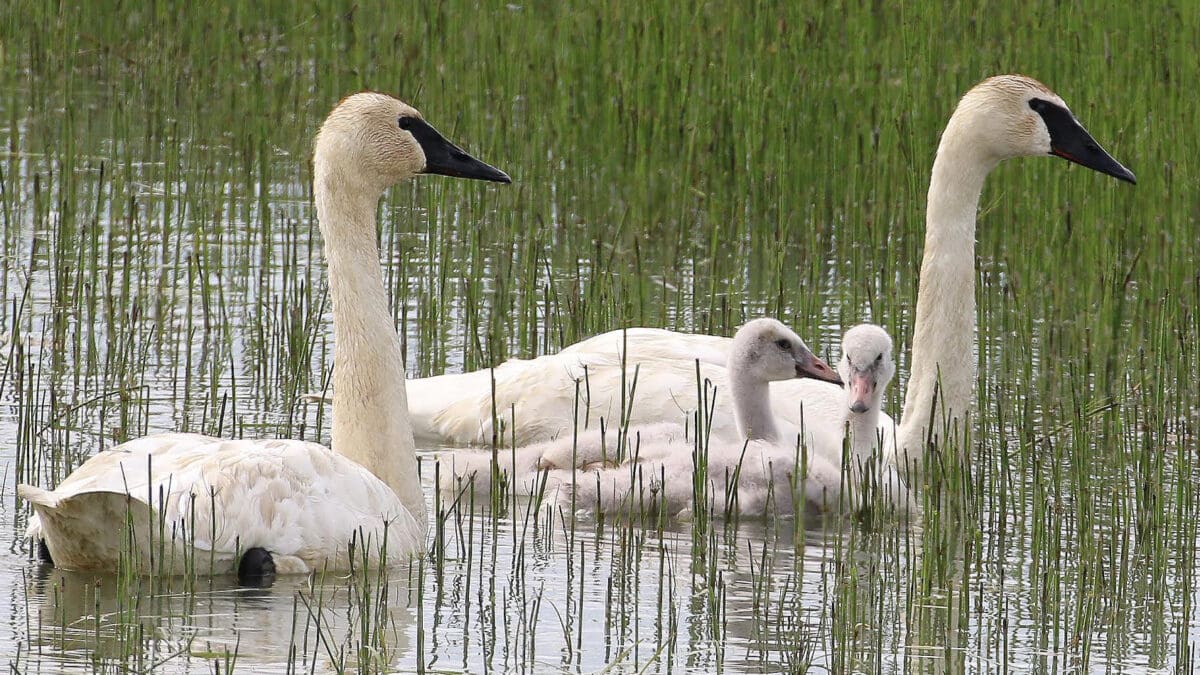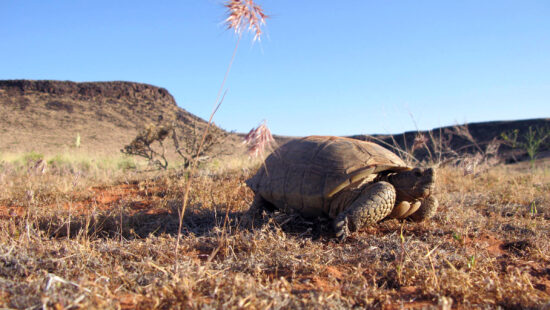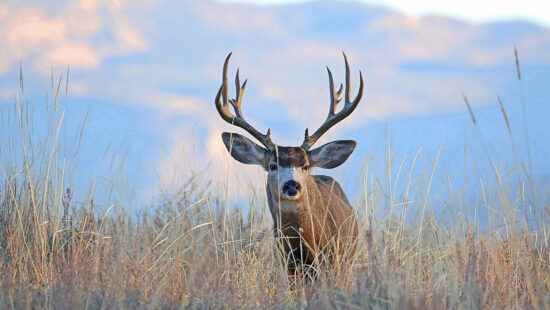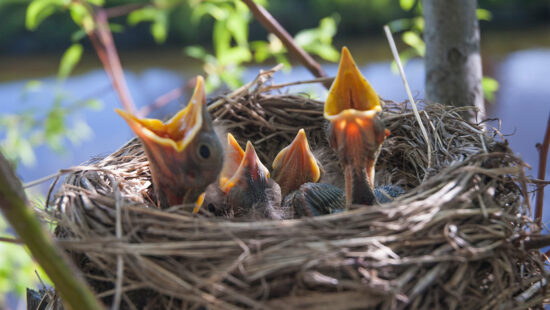Wildlife
Information for Utah’s 2023 waterfowl hunts

Trumpeter Swans. Photo: courtesy of Utah Division of Wildlife Resources.
UTAH – As the leaves start to turn and the month of October inches closer, hunters are beginning to anticipate Utah’s 2023-2024 waterfowl hunting season. Geese, duck, and swan hunting seasons all begin in early October, and run till mid to late January or early February.
Except for tundra swans, which need a permit from the hunt drawing that closed on July 19, all other Utah waterfowl hunts are accessible to anyone with a legitimate Utah hunting license. To hunt any waterfowl in Utah, however, you also need to have a Harvest Information Program (HIP) number and a federal duck stamp if you are 16 years or older.
If you are planning to hunt ducks, geese or swans this fall, here is some information to be aware of:
Geese
Canada goose output in Utah was down this year, most likely due to their nests getting flooded during the spring runoff. The Pacific Flyway’s Canada geese populations, however, are growing and are currently in excess of goals.
“Hunters should see plenty of geese early in the season,” said Jason Jones, Utah Division of Wildlife Resources migratory bird coordinator. “Migrating geese will begin showing up around mid- to late November. Geese continue to increase in the Pacific Flyway — which includes Utah — and hunting should be good this year. Snow goose numbers have also continued to increase in the Pacific Flyway.”
The dates for the dark and white-fronted geese season for the Northern area extends from Oct. 7-14, and from Oct. 26 to Jan. 31, 2024. In the Wasatch Front area, the season begins Oct. 7-14, and then from Nov. 10 to to Feb. 15, 2024. The Eastern Box Elder area runs from Oct. 7 to Jan. 20, 2024. The Southern area runs from Oct. 14 to Jan. 27, 2024.
The hunting season dates for the Light geese vary slightly, as the season for the Eastern Box Elder, Northern and Wasatch Front goose areas run from Oct. 16 to Dec. 22, and start again Feb. 1 to March 10, 2024. The Southern area season runs Oct.25 through Dec. 15, and again from Jan. 16 to March 10, 2024.
A tip from the DWR for a successful geese hunt includes using a good call.
“Calling is a very important part of goose hunting,” Jones said. “Geese are very social birds, so being able to sound like a goose can help hunters harvest more birds.”
A youth waterfowl hunt will be held on Sept. 30 in the southern zone and will allow dark goose and white-fronted goose hunting. Check the Utah Waterfowl Guidebook for the specific zone boundaries and bag limits.
Hunters should also note that most light goose hunting takes place on private property. Make sure to get written permission from landowners before hunting on their property.
Ducks
This year, Utah’s local duck populations are flourishing, and numerous DWR wetland managers have noted outstanding duck production in their individual management regions.
However, long-term drought and disease effects have led to a general decline in duck populations across North America. The Pacific Flyway experienced a general decline in reproduction last year as a result of a drop in the number of ponds and surrounding grasslands accessible for nesting.
Typically, about 15 duck species can be found in Utah. Details and photos of each species can be found in the 2023-24 Utah Waterfowl Guidebook.
“Many prairie pothole regions in North America that are of critical importance to breeding waterfowl species were dry last year, due to drought,” Jones said. “These conditions have persisted over several years, so generally waterfowl production was below average last year. Waterfowl numbers usually peak in mid-September in Utah, with the dabblers coming first, and the divers usually migrating through a bit later in October. Utah waterfowl hunters may experience fewer birds coming through Utah this hunting season compared to the last 10 years.”
The general-season duck hunt runs from Oct. 7 to Jan. 20 in Utah’s northern zone and runs from Oct. 14 to Jan. 27 in the southern zone.
The northern zone youth waterfowl hunt takes place Sept. 23, and the southern zone youth hunt will happen Sept. 30. Check the Utah Waterfowl Guidebook for the boundaries of the two zones and to see the bag limits for ducks.
“Hunters can greatly improve their success during the duck hunt by spending some time scouting before each hunt,” Jones said. “Learning where and when birds are in a specific location can allow hunters to be where the birds want to be, when they want to be there, and will greatly increase the number of birds they harvest.”
Each duck species prefers a different type of environment. Large, open bodies of water are preferred by diving ducks like canvasbacks and redheads. Puddle ducks, like shovelers and teal, are typically seen in shallow water. Additionally, species like mallards are widespread and can be found just about anywhere.
“Think about the species you are hunting and then look for them in the habitats they want to be in,” Jones said. “If you aren’t finding the species you are targeting, move around to different areas until you find them.”
Swans
Every fall, tens of thousands of swans travel through Utah on their route to California, where they spend the winter. In Utah, hunters can anticipate seeing a comparable number of tundra swans as in past years as the species’ populations in the Pacific Flyway are currently doing well.
Utah is one of only nine states in the U.S. that allows hunting for swans.
The tundra swan season this year runs from Oct. 7 to Dec. 9, however, if the federal quota of 20 trumpeter swans is met before Dec. 9, the swan hunting season will close early. Those with a tundra swan permit may harvest only one tundra swan during the 2023 season.
“Swans migrate and stop over at the same locations each year,” Jones said. “Traditional hunting areas, such as the Bear River Migratory Bird Refuge, will hold swans beginning in late October to early November, and they typically stay in the area until the marshes freeze up.”
Hunters should also be mindful that tundra swans will leave their resting places to forage in the early and late afternoon, particularly later on as the days grows colder. Scouting ahead of time can assist hunters in figuring out when swans are migrating and deciding on the best times of day to hunt.
“Hunting along a swan’s flight path, or in their feeding locations, will increase your odds of harvesting a swan,” Jones said.
Hunters should also be sure of the swan species they are targeting before attempting to harvest one. Trumpeter and tundra swans both migrate through the state, but starting this year, it is illegal to harvest trumpeter swans in Utah.
Hunters who harvest a trumpeter swan will also be prohibited from being able to apply for a tundra swan hunting permit for several years. Youth who harvest a trumpeter swan must wait three years until they can apply for a tundra swan permit, and adults must wait five years.
Each species can be identified by size and sound. Trumpeter swans are significantly larger than tundra swans. Trumpeter swans do not have a yellow-colored area near their eyes, and they also make a distinctive trumpet-like sound, hence their name.
Additional Information
There are more than 20 waterfowl management areas (WMAs) throughout Utah that are owned and managed by the DWR. The WMAs opened to the public on Sept. 21.
If you are planning to hunt waterfowl this fall, here are some tips to keep yourself and your hunting dog safe:
Do not harvest, handle or eat any animal that appears sick.
Field-dress game animals in a well-ventilated area or outdoors.
Avoid direct contact with the intestines.
Wear rubber or disposable latex gloves while handling and cleaning birds. Wash your hands with soap and water, and thoroughly clean all knives, equipment and surfaces that come in contact with the birds. Disinfect using a 10% chlorine bleach solution.
Keep your game birds cool, clean and dry.
Do not eat, drink or smoke while cleaning game or handling animals.
All game meat should be thoroughly cooked before eating (well-done, or 165° F).
If you have domestic poultry, keep them separated from the wild bird carcasses you have harvested, and do not handle poultry after handling wild birds.


















